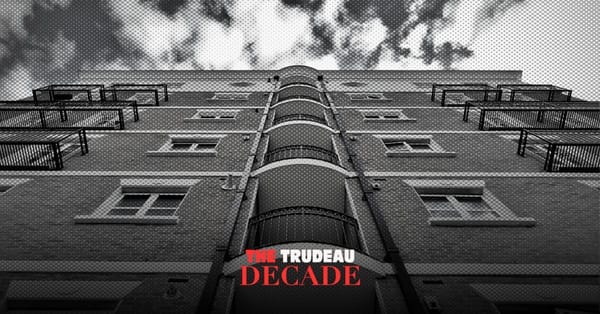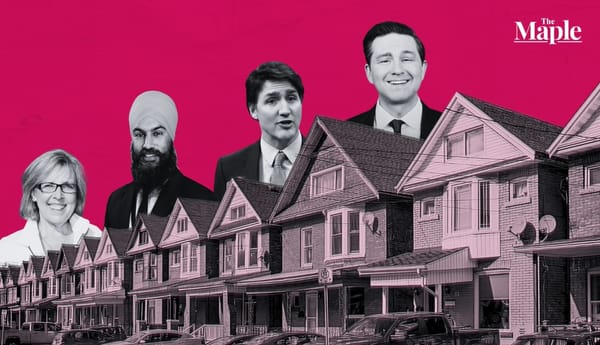Tenants across Canada are facing rent increases. According to Rentals.ca, the average rent for all Canadian properties rose to $1,959 per month in August, representing an annual increase of about 11.1 per cent.
The spiking cost of rent is most concentrated in cities. In Vancouver, rent for an average one-bedroom apartment hit $2,574 in August, up almost 19 per cent from the previous year. In Toronto, it cost $2,329 per month, up roughly 17 per cent.
Many of the provinces where the cost of rent is highest recognize the danger tenants face. In Ontario and British Columbia, for example, the provincial governments have promised to address the problem by increasing housing supply, taking pressure off the rental market.
While increasing the supply of affordable housing is certainly needed, it will take years for provinces to change their policies and build enough to curb the trend of skyrocketing rent. A strategy that seeks to address the housing crisis solely through supply will not help those who are already struggling to make rent and the people who are being pushed out of their homes because of it.
What tenants really need is for their provincial government to implement policies that will prevent landlords from arbitrarily removing them from their homes and drastically hiking the price of rent.
The Current System Isn’t Working
While a few provinces do have some sort of rent control regime in place, almost all of them have several significant loopholes. Notably, every province, other than Manitoba and Prince Edward Island, allows for vacancy decontrol, meaning that when a unit is vacated, there’s no limit on how much the landlord is allowed to charge the next tenant. This provides a financial incentive for landlords to evict tenants, even if they haven’t been accused of doing anything wrong.
In many cases, landlords will evict their tenants by moving a family member into their unit or conducting repairs and renovations that require the unit to be vacant — or at least they claim that they will do these things. The rise of no-fault evictions, as they’re called, has become a staggering problem in the country’s most populous cities.
For example, data from the Landlord and Tenant Board in Ontario found a 232 per cent increase in applications to evict tenants from 2015 to 2018, to convert, demolish or extensively renovate the rental unit or residential complex. It has only become easier for landlords to do so since then, with Premier Doug Ford passing legislation to streamline the eviction process.
In British Columbia, despite recent reforms to the Residential Tenancy Act, renovictions are still permitted as long as the landlord has all applicable permits and approvals ready. Tenants have the opportunity to oppose the application in a dispute resolution hearing, but many tenants just move out, and the most recent data available shows that those who do fight back only win their cases 13 per cent of the time. This often isn’t because they don’t have a case, but rather because landlords tend to have more time and financial resources to dedicate to winning.
These evictions and corresponding rent increases have caused the stock of affordable rental units on the private market to dwindle, leaving tenants with fewer options.
In some cases, tenants have to resort to unsafe housing options that aren’t up to provincial standards. In others, tenants will be priced out of their neighbourhood. Studies have found that this can: cause damaging psychological and social consequences because people have to sever long-term relationships with their community, increase people’s commuting times, and limit economic mobility by forcing people to move into neighbourhoods with fewer job opportunities and lower incomes. In the worst cases, tenants lose their access to housing altogether and have to face a period of homelessness.
Why Vacancy Control Works
Vacancy control isn’t a wholesale solution to Canada’s housing crisis, but it will have multiple benefits.
Because landlords are able to use loopholes to avoid rent rules on their units, strengthening rent control to include vacancy control could help keep more units regulated, thus stabilizing the average price of rent across a city or province. Vacancy control would also help maintain the stock of affordable rental units available on the private market.
Vacancy control would also improve housing stability and reduce displacement among tenants within a city or even out of it due to rising rents in uncontrolled units, helping to combat gentrification. It would also strengthen the ability of people with low incomes to live in high-income neighbourhoods, allowing them to have greater access to better job opportunities, public schools with more resources and other improved amenities.
While vacancy control won’t completely stop evictions, it’s among the most robust protections the government can provide for tenants. A research review on the effects of rent control by the Urban Institute, for example, found that “vacancy control may be the only way to truly ensure the stability and rights of tenants in rent-controlled units.” Of course, in order for vacancy control to be effective, it needs to actually be enforced, with violators penalized. To help with this, provincial governments could create registries that track the amount charged for rent, that way potential new tenants could be made aware if a landlord is proposing illegal increases, and report them.
With rents surging to the highest level in years, it’s time for the government to support the rights of tenants across the country by ensuring that they have a reasonable expectation of remaining in their home and community without a landlord pushing them out.






